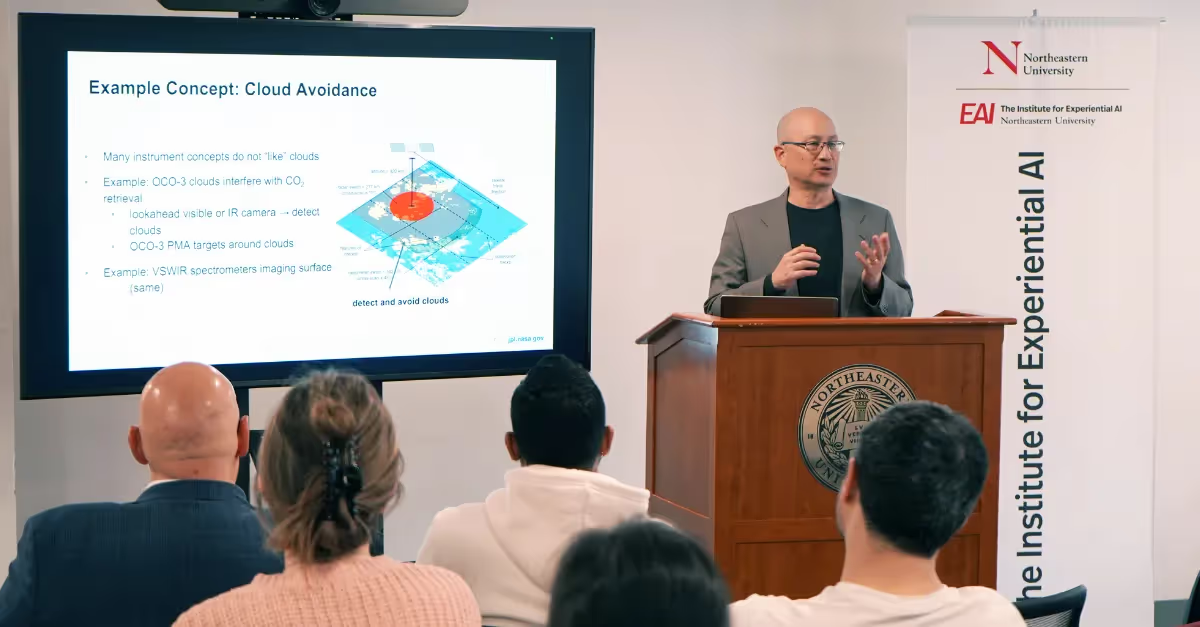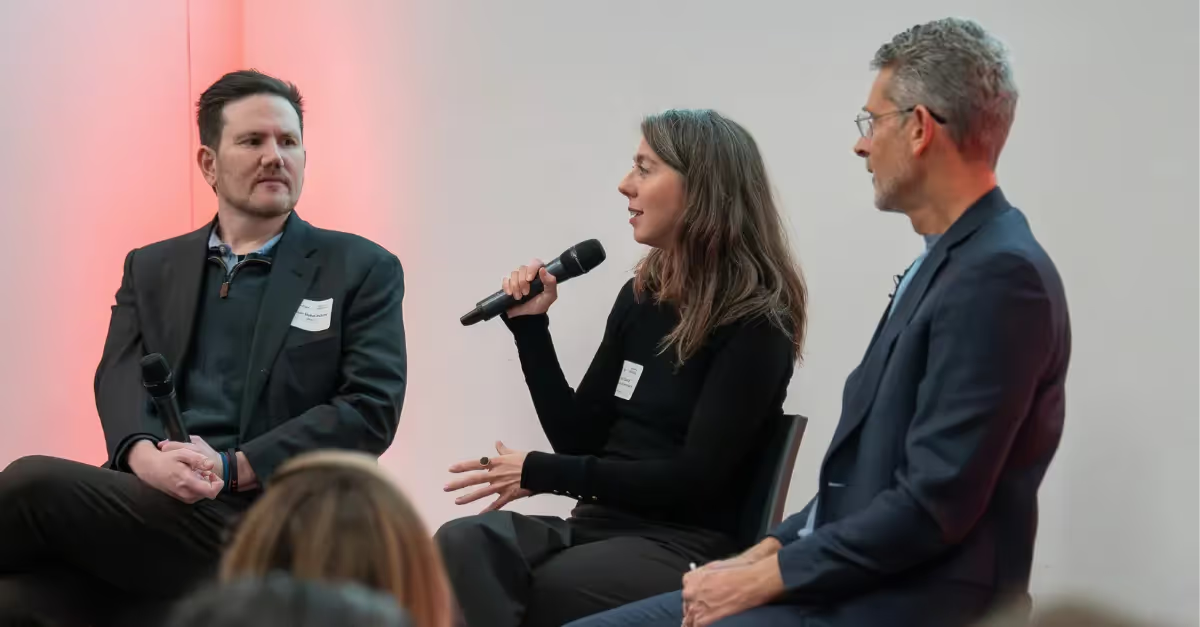NASA Scientist on How AI Is Making Spacecraft Smarter

“We want to be as smart as the dumbest rat,” said Steve Chien, referring to the intelligence of modern spacecraft. That’s a more ambitious goal than it may at first seem. Chien is a senior research scientist and head of the Artificial Intelligence Group at NASA's Jet Propulsion Laboratory (JPL), where he once worked alongside Institute Director Usama Fayyad. It’s Chien’s job to figure out how AI can help improve space research and operations.
“What do they do?” he asked, referring to Earth-observing spacecraft as part of the Distinguished Lecturer Seminar hosted by the Institute for Experiential AI. “They basically observe everything that is underneath them and then they hope they get imagery of what’s interesting.”
Whether you’re a person or a machine, sorting through all of that imaging data is time-consuming and really inefficient. As Steve explained, there’s a fundamental trade-off between the resolution of an optical instrument and its field of view. If you want a high-resolution instrument, it will likely have a narrow field of view. Illustrating the challenge, he pointed out that even a rat has focus of attention.
“When it smells food, it goes and looks at the food,” Chien said. “It doesn’t just wander around aimlessly. So this dynamic targeting is our goal to build a smart rat in space.”
The basic idea is to have a look-ahead sensor with a wide field of view that can dynamically look at interesting things on the surface. Clearly, the definition of “interesting” changes depending on who (or what) you’re talking to, but the core technology involves the use of edge computing, machine learning, and AI to analyze and dynamically target a primary sensor for optimized data returns.
“In the future,” Steve said, “we believe every single space mission will operate this way.”
In his talk—which was one of two talks at Northeastern that day, the other being a keynote during the opening plenary session of AI in Action Week—Steve provided examples of the “Dynamic Targeting” mission concept. These included the potential to detect likely areas for deep convective ice storms, and in studying activity in the Planetary Boundary Layer (PBL)—the windy, lowest layer of the troposphere.
Watch the full seminar here.




